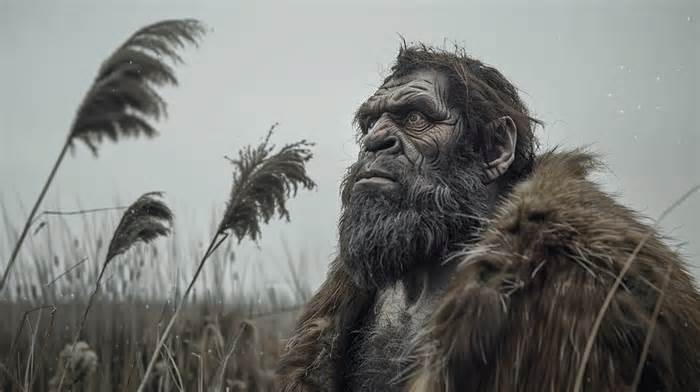Scientists have discovered evidence that suggests that hominids, the ancient relatives of humans, existed in Europe at least 1. 95 million years ago.
This finding, from the Grăunceanu site in Romania’s Olteț River Valley, represents the earliest-known trace of hominin activity on the continent, predating prior European hominin fossils by more than half a million years.
The discovery, recently published in Nature Communications, is based on animal bones cut and meticulously analyzed that are found in a region rich in fossil traditionally in the discussions of the first human migrations.
According to the researchers, those cut marks were made with tools, indicating that hominids actively slaughtered the animals in what is now the middle of Romania. This marks a replacement in our understanding of early human dispersals beyond Africa.
“The timing of the initial dispersal of hominins into Eurasia is unclear,” researchers wrote. “Our results, presented along with multiple other lines of evidence, point to a widespread, though perhaps intermittent, presence of hominins across Eurasia by at least 2.0 Ma.”
For decades, Dmanisi’s site in Georgia, which dates from 1. 8 million years ago, was considered the first presence of hominids in Eurasia. Although many deposits of Asia and the Middle East refer to hominid activities prior to Dmanisi, Europe remained an enigma.
The Romanian site at Grăunceanu, first excavated in the 1960s but only recently dated using cutting-edge uranium-lead methods, now reshapes that narrative. With high confidence dating to 1.95 million years ago, it challenges established timelines and opens new debates about the pathways and adaptability of early human populations.
The findings could fundamentally replace our understanding when and how hominids ventured in Europe, suggesting that they adapted to a wide diversity of environments long before what was thought.
The team’s conclusions stem from a meticulous analysis of nearly 5,000 animal bones from the Grăunceanu site. Among these, 20 specimens showed distinct cut marks—seven with high confidence and another 13 deemed probable.
The brands were concentrated in typical spaces of diffusion activities, such as warm and jaws, which suggests an intentional butcher shop that environmental or random predators.
These marks were known qualitative and quantitative methods, adding complex 3-D imaging and comparative statistical analyses. The team claims to have eliminated explanations of choice, such as trampling or tooth marks, strengthening the case for hominin involvement.
The bones belonged to various species, including artiodactyls (even-toed ungulates) and smaller carnivores, reflecting a diverse and opportunistic subsistence strategy.
These findings suggest that Grăunceanu offers more than just evidence of early human presence. It paints a picture of the environment hominins inhabited. The region, part of the Dacian sedimentary basin, was a mix of open grasslands and woodlands, characterized by mild winters and distinct wet and dry seasons. Isotopic analyses of a horse tooth from the site revealed variations in rainfall and temperature, suggesting seasonal adaptations by fauna and hominins.
The fauna at Grăunceanu included a surprising array of species, from ostriches to pangolins, which typically thrive in warm climates. This indicates that while winters were mild, hominins still faced environmental challenges, such as seasonal droughts and limited resources, that would have tested their resilience and adaptability.
This discovery can have wide implications to understand early human evolution and migration. The chronology of the dispersion of hominids outside Africa has been the subject of intense debate, and the first migrations date back to about 2 million years. The evidence of Grăunceanu suggests that these first populations moved faster and adapted to varied and hostile environments of what was thought of the past.
The tools used by these hominins remain elusive, as no lithics (stone tools) have been conclusively linked to the site. However, similar sites in the region have yielded simple flake tools, consistent with early Homo species. This raises the possibility that the Grăunceanu hominins were part of a broader wave of migration that included primitive tool technologies.
Despite its importance, the gradenu raises as many questions as answers. Without direct hominid fossils, researchers can only speculate on the guilty species of cutting marks. The moment coincides with the first appearances of Homo Erectus in Africa, but other possibilities cannot be ruled out, such as Homo habilis or even an unknown hominid.
The lack of stone equipment also limits the ability to link those hominids to broader cultural or technological tendencies. Future excavations and analysis will aim to detect more direct evidence of their presence, as additional equipment or, ideally, fossilized remains.
Ultimately, the discovery of Grăunceanu highlights the importance of reviewing the oldest fossil sites with fashion techniques. As more regions are studied, the time line of evolution and human migration continues to expand, revealing a more complex and dynamic story than in the imagined past.
“Hominids as a whole, and namely members of the genus Homo, are characterized through their environmental flexibility,” the researchers concluded. “The widespread presence of hominins in Eurasia around 2 Ma, as we argue and provide evidence here in the form of securely marked bones dating to a minimum of 1. 95 Ma, is further aid to this flexibility. “
“While it is clear that the presence of hominins in Eurasia at this time is likely to be geographically and temporally discontinuous, the preponderance of ephemeral lines for hominins in this region can no longer be ignored. “
Tim McMillan is a retired law enforcement director, investigative journalist, and co-founder of the report. His writing focuses on defense, national security, the intelligence community, and psychology-like topics. You can follow Tim on Twitter: @lttimmcmillan. Tim can be reached via email: tim@thedebrief. org or encrypted email: lttimmcmillan@protonmail. com

